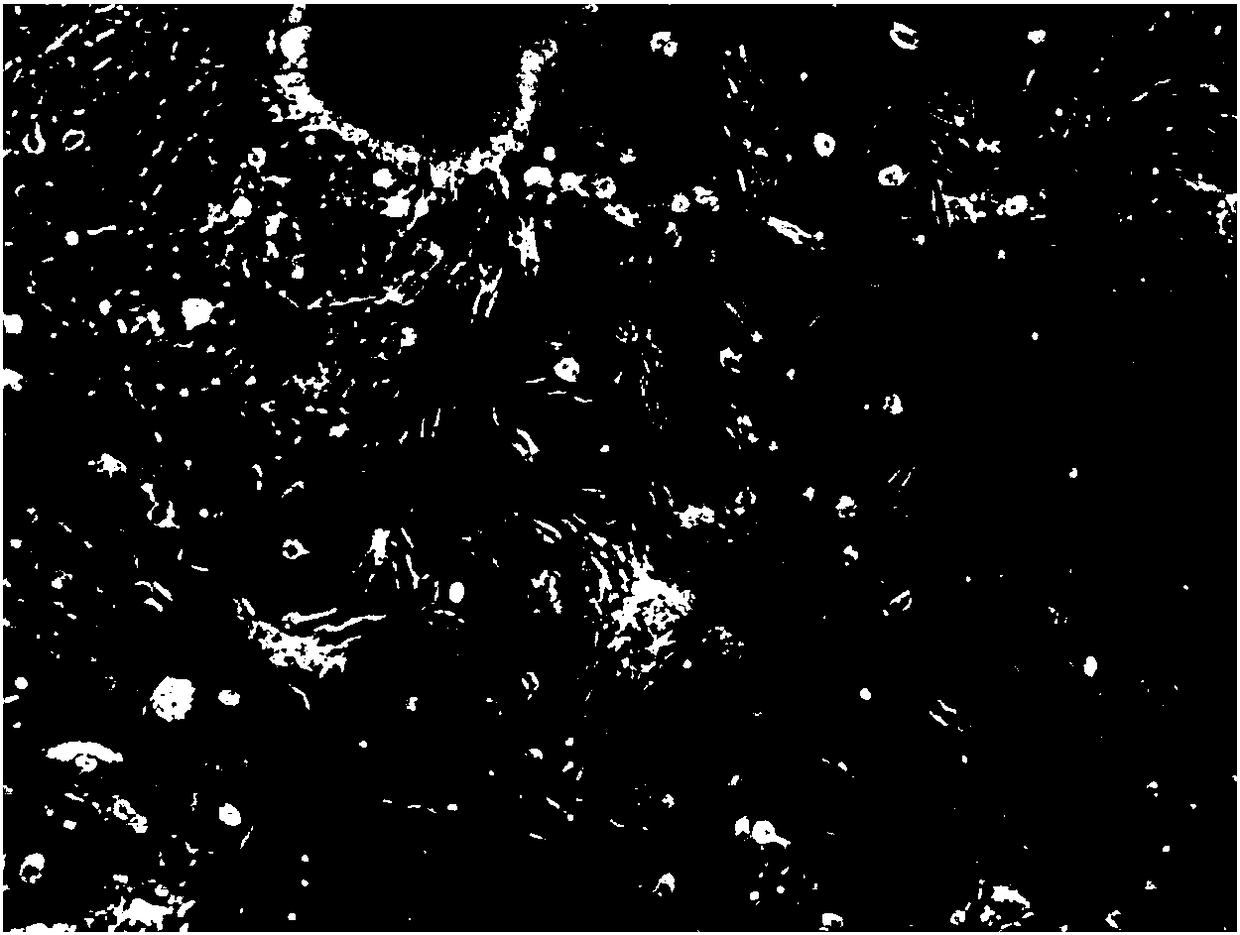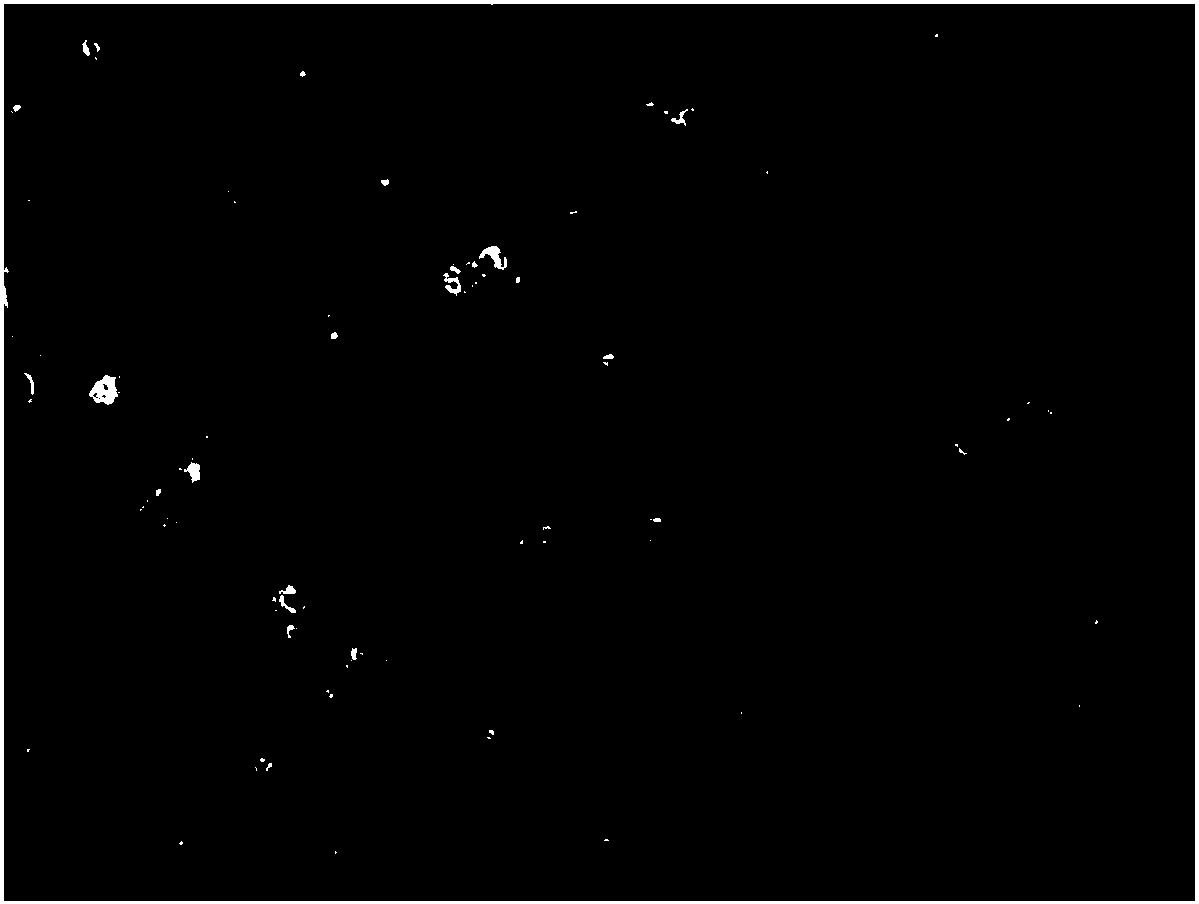Method for culturing middle turbinate derived olfactory ensheathing cells
A technology of olfactory ensheathing cells and turbinates, applied in the field of in vitro cell culture, can solve the problems of difficulty in obtaining olfactory ensheathing cells, and achieve the effects of increasing the ratio of olfactory ensheathing cells, high rejection risk, and low safety
- Summary
- Abstract
- Description
- Claims
- Application Information
AI Technical Summary
Problems solved by technology
Method used
Image
Examples
Embodiment 1
[0031] Prepare cleaning solution: 10 mL of DPBS balanced salt solution containing Antibiotic-Antimycotic mixture (1:100) per liter;
[0032] Prepare the primary culture medium: 500 mL of DMEM / F-12 medium, 50 mL of fetal bovine serum, 2 mM L-glutamine, and 5 mL of Antibiotic-Antimycotic mixture (1:100);
[0033] Prepare passage medium: each 250 mL contains 50 mL fetal bovine serum, 50% endothelial progenitor cell conditioned medium (EPC-CM) 250 mL, BPE 20μg / mL, Forskolin 2uM, L-glutamine 2 mM, Antibiotic-Antimycoticmixture ( 1:100) 5 mL of DMEM / F-12 medium.
[0034] (1) Collect healthy middle turbinate mucosa, put the sample in a storage and transportation bottle and label it in a 4-25℃ transportation box for storage and transportation; the sample will be processed within 2 hours after collection: perform 75% on the outer surface of the storage and transportation bottle. Wipe and disinfect with% alcohol, open the cap of the storage and transportation bottle in the biological safety c...
Embodiment 2
[0039] Example 2 Indirect immunofluorescence identification of olfactory ensheathing cells
[0040] After the pressure screening in step (4) of Example 1, the cells in the culture dish grew to 80% confluence, the cell slides in the dish were taken out and placed in a six-well plate, rinsed once with PBS balanced salt solution; After fixation in formaldehyde solution at room temperature for 20 minutes, aspirate the fixative solution; then add 0.1% TritonX-100 solution, incubate at room temperature for 10 minutes, and then aspirate all the liquid. Rinse the slides with PBS balanced salt solution 5 times for 5 minutes each time; Donkey serum was diluted with the primary antibody Anti-human S100β / Anti-human GFAP to a final concentration of 1:400; the diluted primary antibody was added to the cell slide and incubated overnight at 4°C; after incubation, the slide was rinsed with PBS balanced salt solution 3 times, 5min each time; add a secondary antibody labeled with a fluorophore at a...
PUM
| Property | Measurement | Unit |
|---|---|---|
| area | aaaaa | aaaaa |
Abstract
Description
Claims
Application Information
 Login to view more
Login to view more - R&D Engineer
- R&D Manager
- IP Professional
- Industry Leading Data Capabilities
- Powerful AI technology
- Patent DNA Extraction
Browse by: Latest US Patents, China's latest patents, Technical Efficacy Thesaurus, Application Domain, Technology Topic.
© 2024 PatSnap. All rights reserved.Legal|Privacy policy|Modern Slavery Act Transparency Statement|Sitemap



